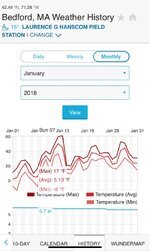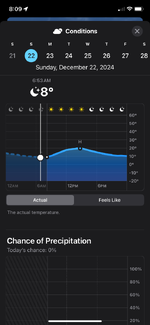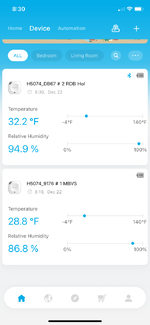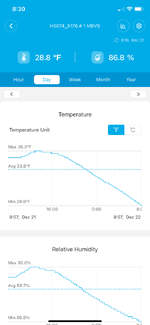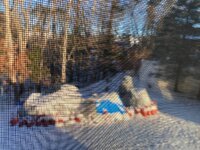It is 8° F this morning here in Massachusetts. I am happy to report temperature inside my largest spaceship held up at just over 32°F.
That is all passive heat helped by a large footprint of 22 ft by 5 ft enclosure that is sheltering 4 decent size fig trees (RDB, Hollier, RLBV, and Takoma Violet). Temperature inside a much smaller enclosure built to protect a MBVS dipped slightly below 29° F. (note that the sensors are inside the enclosure but not inside the burlap and pink insulation wrapped around the trunks and limbs)
Three other enclosures do not have a Govee sensor inside.
Photos were taken this morning from the lower and upper floors. Please forgive the poor quality caused by the window screen as I wasn’t brave enough to step outside





